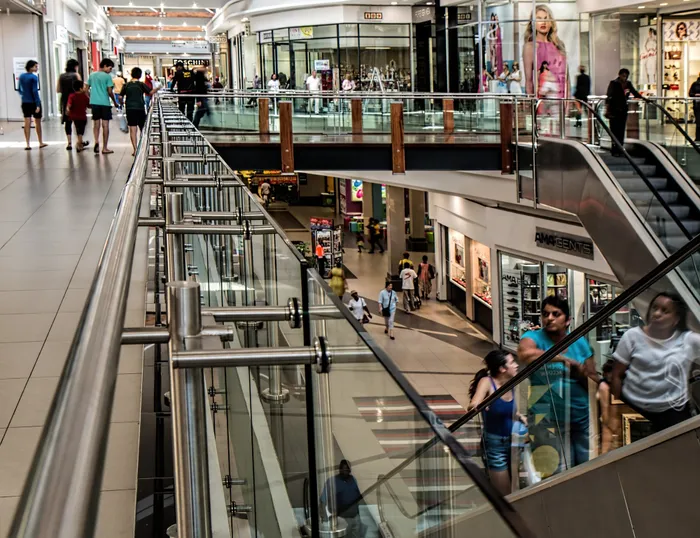Window shopping: South Africans ain’t got no time for that

More South Africans are returning to malls, but they are not hanging around to window shop. Picture: Steve Buissinne/Pixabay
Shopping malls in South Africa have started recovering to pre-Covid conditions as more influential consumers and those who rely on credit increasingly visit these brick-and-mortar retail centres.
But they are not hanging around longer than they need to.
Middle-class shoppers are also among those who have been frequenting shopping centres since the easing of the pandemic.
Read our latest Property360 digital magazine below
An analysis of foot traffic from January 2020 at seven super regional malls across Gauteng, Western Cape, and KwaZulu-Natal – including Sandton City, Mall of Africa, Fourways, Gateway, Menlyn, The Pavilion, and Canal Walk, reveals “interesting insights”, says Andrew Fulton, director at customer strategy, analytics, and research company Eighty20.
The analysis was performed using its recently launched Terain solution, an AI-driven geo-spatial programme using near real-time app location data, in combination with the company’s customer profiling information.
As one would expect, he says foot traffic to these malls dropped dramatically during lockdown – by between 80% and 90%, with Sandton City being the hardest hit. Some of these malls saw 1.5 million or more visitors a month pre-Covid, but experienced a decrease of 1.2 million during the hard lockdown.
While all seven malls have now recovered and exceeded pre-Covid footfall numbers, Fulton says it took until Q3 2021 for most malls to reach pre-lockdown visitor volumes.
“Fourways and Sandton Mall have recovered best of the seven malls compared, but remember, Fourways was still under renovation at the end of 2019, so its relative growth will look more impressive.”
Shoppers are now more focused
Dwell time dropped between 65% and 85% during lockdown, and still has not recovered to its pre-Covid levels. Canal Walk came closest to the pre-Covid benchmark at the beginning of the year, at 99% recovery, with Fourways lagging at 89%. Since then, however, it appears dwell time has fallen for all malls. This supports other shopping centre research Eighty20 has conducted showing that shoppers have become far more focused and deliberate in their shopping missions, spending less time browsing.
“People tend to go into the store, get what they need, and get out quickly to avoid lengthy contact with other shoppers. The closing of cinemas, the shift to more online shopping, and the rise of grocery delivery services are other likely contributors to decreased dwell time.”
Who is still going to the mall
Looking at demographics, and the eight segments in Eighty20’s ENS customer profiling tool, he says Sandton City dominates the three wealthiest segments. These include middle-class workers, ‘heavy hitters’ (influential people), and ‘comfortable retirees’.
Fourways shows the largest number of LSM 10 shoppers while Canal Walk is the chosen destination for the ‘mass credit market’, and reflects the demographics of South Africa best, with more LSM 6 shoppers than LSM 10 shoppers. Gateway and Pavilion are also similar in this respect.
“If we look in terms of income, nearly 37% of Sandton City shoppers earn more than R20 000 per month personal income. For Pavilion and Canal Walk, only a quarter of shoppers earn that much.”

In addition, the research shows that, for Sandton Mall, roughly 45% of shoppers have a car as their main form of transportation, whereas, for Canal Walk it is closer to 35%, with 20% using minibus taxis.
“While footfall has certainly recovered at the six malls we examined, dwell time still isn’t at its pre-Covid levels, and might never recover.
“Considering that so many studies have shown a strong positive correlation between dwell time and sales, retailers in malls may need to start putting more creativity into attracting potential customers.”
IOL BUSINESS